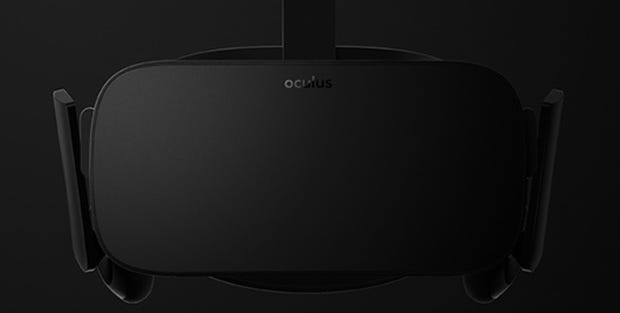Oculus Rift Consumer Model Coming In Early 2016
Cybergoggles time
Paint a fluorescent blue anarchy symbol on the back of your leather jacket, slip on your fingerless studded gloves, stock up on Gamer Grub, and try to figure out how your rad cybermohawk will fit under a headstrap: cybergoggles are coming.
The Oculus Rift virtual reality headset's consumer model had previously been lined up for 2015, but Oculus VR were always a bit dreamy about that. Now they've announced that, for really reals, it'll arrive in 2016 some time from January to the end of March. The exact price, hardware specifications, and other details you might fancy knowing are still under wraps for now, though.
The version folks at home will get to play with is improved again over last year's Crescent Bay prototype. Oculus say it'll have "an improved tracking system that supports both seated and standing experiences, as well as a highly refined industrial design, and updated ergonomics for a more natural fit."
The moody, low-res teaser photos suggest that, sadly, the headset will look less like something from an xtr3me '90s commercial.
Oculus are planning to support it with a "full ecosystem", which broadly means they'll have lots of neat-o VR things presented and supported in useful ways. It's all a bit Wild West at the moment. Oculus are also funding games and VR experiences - they're co-publishing EVE Valkyrie as a launch title, for one thing.
I'm still hugely sceptical of this latest virtual reality craze, myself. I don't want to - and many can't - spend a load of extra money on a monitor for my head. Every experience I've had with the Rift as well as 3D movies has been a blurry mess, suggesting something about my eyes simply doesn't like it. I don't have the space for Valve's Vive prototype, no matter how much Graham and Alec enjoyed it. And no one has found a solution for cybergoggles mussing up rad hair and good makeup - am I supposed to hack the planet looking uncool?
Still, these are the early days (of this latest VR craze), and I certainly can't predict where the hardware may go with another ten years' work.

